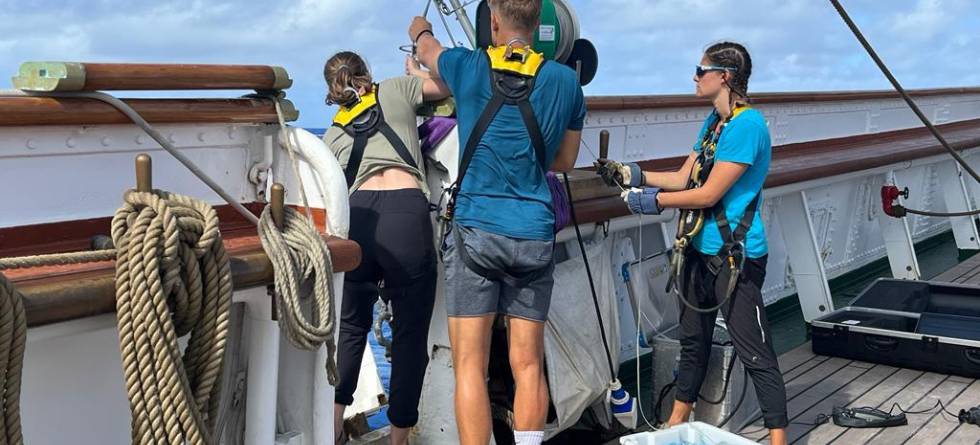We have been sailing the waves of the South Pacific aboard the Statsraad Lehmkuhl for more than one week now and this late morning’s watch is about to end. The watch leader orders us to change the angle of the “mainsail” to stop the ship. On deck, a group of people begins to mount what seems to be a scientific instrument. It’s a CTD. The acronym stands for “Conductivity-Temperature-Depth” and the instrument measures how salinity and temperature vary with depth. These parameters are essential for physical oceanographers to study and explain the ocean.
Why, you may wonder, is it important to know the different characteristics of the water masses? They allow us to understand the circulation of the oceans, how heat, oxygen, and nutrients are transported.
From the South Pacific to the Norwegian coast
Everything is ready, the ship stopped somewhere between Fiji and the Island of Tonga. The CTD is lowered 600 meters and I am curious to know how different the water column of the South Pacific Ocean is to the Norwegian Sea.
After the CTD is back on board, the ship resumes its journey. I eagerly open my laptop to look at the temperature and salinity profiles and decide to compare these profiles with those I measured along the Norwegian west coast a couple of month ago (Fig. 1).

I am so fascinated; it is one ocean and yet the water here is so different – two opposite worlds: the tropics and the high latitudes. The water of the South Pacific is much warmer than in Norway; in the South Pacific the temperature of the upper layer is 26,8 °C while the temperature is only 6.8 °C along the coast of Bergen. A little later, I have the opportunity to confirm this observation first hand, when the captain announces that we will stop the ship this afternoon to go swimming. This is my first chance to swim in the waters of the Pacific.
I’m finally immersed in the tropical waters that have surrounded us for weeks. The first impression? That the water is so warm! It feels very similar to that of the Mediterranean Sea, where I am from.
During my swim, I realise another difference: the salinity. The salinity of the South Pacific is much more saline than in the Norwegian Sea (Fig. 1). When you get out of the water you feel the salt on your skin, and you immediately want to take a shower to wash away the taste of the sea. But I am surprised that it is less salty than the Mediterranean Sea where you can see the grains of salt settling on your skin when you dry.
It's exciting to observe the change in physical properties across different oceans of the world when taking a dip. Thanks to the CTD on board the Statsraad Lehmkuhl, I realised that the observations appearing on the screen can be experienced through a swim. Sometimes science can be felt and tasted!

